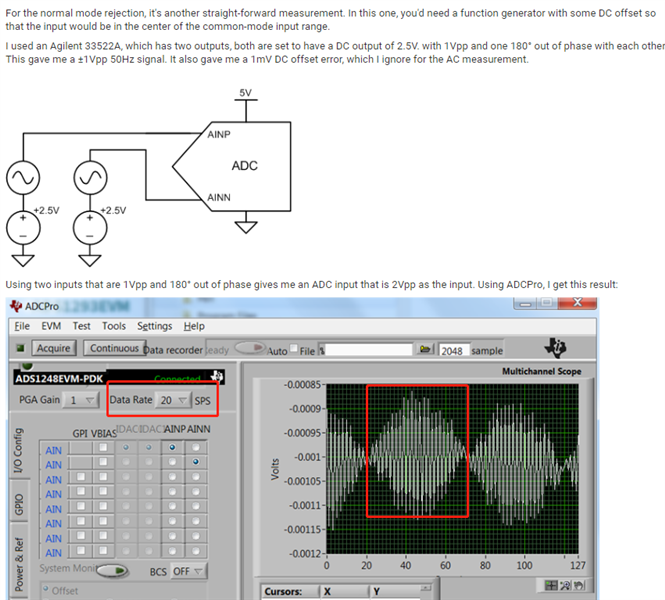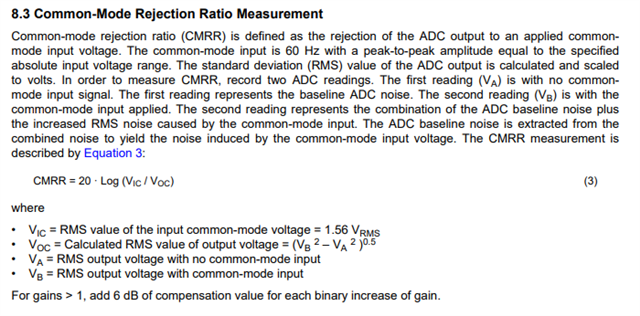Other Parts Discussed in Thread: ADS1262
Hi Joseph Wu,
I do saw your reply on CMRR and NMRR testing: ADS1299 EVM CMRR measurements. - Data converters forum - Data converters - TI E2E support forums
it`s quite clear, but I do have some more question on it:
1, what common mode voltage range should used of CMRR testing when PGA in high gain(for example, G=32), in your post I saw that you short positive&negetive input together, then connect to common mode voltage of:2.4~2.6V for G=32 CMRR tesing, but in the datasheet of ADS1248 I found the common mode input range is:

as we short input, in Vin is zero, thus, the common mode input range is VSS+0.1V to AVDD-0.1V for all gain, so my concern is why we do not use this range for CMRR testing but use a much samller CM range(2.4~2.6V), or what exact range do we use for ADS1248 test(for datasheet spec)?
2, for NMRR or CMRR AC testing, if the data rate is lower than 50/60Hz, then aliasing will happen, and also as internal filter exsit, attenuation will happen, for the data caculation, how to deal with the aliasing and attenuation?
Thanks very much.
Regards, Zhe





